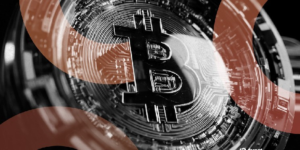This term usually applies to blockchains and mining algorithms, designed to give no benefit for ASICs over consumer grade hardware.
What Is ASIC-Resistant?
ASIC means an application-specific integrated circuit. Most consumer computer hardware is a general function hardware, able to perform almost any operations that software orders it to do. This versatility, however, comes at a cost: generalization is the opposite of optimization. When someone needs to create a device that will do only one thing, like a digital clock for example, it is way more efficient to create a specific PCB than use a whole laptop. The same for cryptocurrencies.
Proof-of-work consensus algorithms are the basis of many popular cryptocurrencies, such as Bitcoin and Ethereum. In order to confirm each new block, computers on a blockchain have to solve a complex puzzle, making multiple attempts to find a solution to a mathematical problem. GPUs usually excel in parallel computation and do it faster, with more energy efficiency than the CPU. Later on, if it becomes economically viable, chip manufacturers produce an ASIC miner for a specific mining algorithm. As the main purpose of an ASIC is to perform as many attempts (hashing functions) per second as possible, they make for a way better tool to mine Bitcoin or other ASIC-mineable PoW cryptocurrencies, as opposed to a GPU. They just do the job better, because they are designed for this one specific job.
Bitcoin ASIC miners these days have a million times better performance than a desktop PC, rendering the latter completely useless in modern day mining. Moreover, since most of the hashpower eventually got located in a few gargantuan mining pools, situated in regions with access to cheap electricity and favorable legal conditions, PC mining isa thing of the past for most cryptocurrencies.
This situation effectively undermines and threatens the cornerstone of crypto philosophy: decentralization. A power outage in Northern China in early 2021 resulted in the Bitcoin network hashrate dropping in half for several days, proving that we are dangerously close to losing the independent nature of the first cryptocurrency.
Here comes the idea of ASIC resistance. In theory, an ASIC-resistant cryptocurrency is more fairly distributed because it can be mined on regular consumer PCs. This should guarantee that more people can participate in the mining — as a result, there’s no ASIC arms race, leaving the regular folk sidelined and the mining process stays less capital-intensive in general. Such a network will more likely be decentralized and geographically distributed. It does not guarantee that gigantic mining farms near hydropower dams will not emerge, but it makes sure that they can not dominate the field entirely.
ASIC-resistant solutions focus on decisive governance and, of course, theright mining algorithm. It should by design prevent the creation ASICs or at least give them no benefit over consumer PC hardware. The specific technical approaches include algorithm variability for each mining block (such as x16r, which quite soon got ASIC’ed), increased memory demand (such as Scrypt and Ethash) or even focusing the mining on the storage volume like Chia.
Ethereum is the largest cryptocurrency with the goal of remaining ASIC-resistant until it moves to the 2.0. version and a proof-of-stake consensus. It has been relatively successful: by mid 2021, it is mined mainly on graphic cards, but new ASIC miners have emerged with a power of 32 graphic cards. ASIC resistance is a game of defense, with no guarantee that any hashing algorithm can avoid the creation of an ASIC miner crafted for it if the underlying cryptocurrency price makes it economically feasible.




